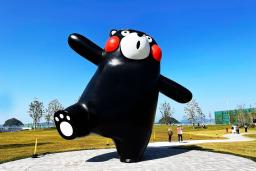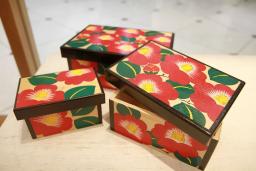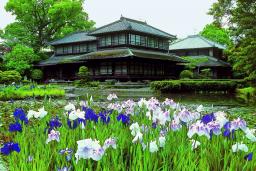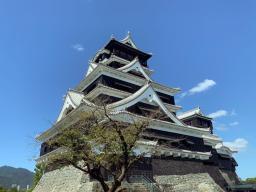Caught the World's attention! The Secret of Minamata Japanese Black Tea

The Great Four of Minamata Japanese Black Tea

Tea has been grown in the Ashikita and Minamata regions since ancient times. A wide variety of tea is grown here, from areas close to the sea to areas deep in the mountains known for their morning fog. While many tea trees are propagated by cuttings from the same tree, this region is home to many native varieties grown from seeds.
Another characteristic is that, precisely because this is a land that has experienced pollution, many farmers make the effort to use as little pesticides and fertilizers as possible.

While there are already well-established brands of Kyushu teas such as Yame tea and Ureshino tea, the production of Wakocha tea was started with the aim of making Minamata tea more well-known.
The Minamata Wakocha Executive Committee was established in 2016, and the National Regional Black Tea Summit was held in Minamata in 2017. The four tea plantations active in the Minamata Wakocha Executive Committee have teamed up to promote the brand as the Great Four of Minamata Wakocha.
In recent years, Minamata Wakocha tea has won numerous prestigious awards, including "The Leafies" and the "Domestic Black Tea Grand Prix" in the UK, the home of tea, garnering significant attention.
Ocha no Sakaguchien(Tea Farm)

Ocha no Sakaguchien was founded 95 years ago in 1929. Located in the mountains near Yunotsuru Onsen, the third-generation owner continues the art of making tea.
May is the peak season for spring picking, and the tea is mixed every two hours to ensure it withers evenly, and then rolled when it is reaches its optimal condition. Work hours completely revolve around the state of the tea leaves, so sometimes work has to continue through the night.

The result of this is Sakaguchien's Harubeni, which won first place in Japan's Black Tea Grand Prix and won the gold medal for two consecutive years at the 'Japanese Tea Selection Paris' competition held in Paris.
Harubeni is a full-leaf type tea made from each and every leaf, and incorporates Benifuuki, which complements black tea well. The withering process, which involves slowly removing moisture from the veins, takes time with full-leaf tea, but by doing it slowly and carefully, it becomes a soft black tea with less bitterness.
Although it is the same Benifuuki as Harubeni, there are products such as Natsubeni and Akibeni for each harvest season. Because it is grown without pesticides, insects may come in during the summer, but the leaves grow strong due to the tea plant's defensive instincts. Like the terroir of wine, various natural factors that go into making black tea overlap, and even the same tree can have completely different flavors depending on the harvest season.


I had the tea brewed on the spot.
Boiling water is poured over 10g of tea leaves, and after about 2 minutes, it is poured into a teacup. It seems that teacups are best suited for drinking black tea, and the way the aroma wafts up is different.
Black tea is generally only good for one brew, but like green tea, it can be enjoyed for two or even three brews.
Green tea loses flavor over time, but because black tea is made by fermenting the tea leaves, it is said that good black tea is still tasty even after 10 years. It seems that spring-picked black tea, harvested in May this year, tastes different from when it was freshly made by around October.

Mr. Sakaguchi served as chairman of the Minamata Wakocha Executive Committee for eight years, from its inception. In addition to selling the tea he made himself, he also held sales events and study sessions to promote the branding of Minamata Wakocha, working closely with other tea plantations to hone his skills.
Mont Blanc Fujiya, a Western-style pastry shop in Minamata City, sells green tea canelés, puddings, cream buns, and other products made in collaboration with Sakaguchien (Tea farm).
| Spot name | Ocha no Sakaguchien |
|---|---|
| Phone number | 0969-67-2325 |
| Official website | お茶の坂口園(公式) |
| @guchisakakazuno |
Amano Seichaen(Tea Farm)

Amano Seichaen is located on the border with Kagoshima Prefecture, and tea is grown on land that is 630 meters above sea level at its highest point. On a clear day, you can even see Mount Kirishima in Kagoshima and Mount Fugen in Nagasaki.
On the vast 10 hectares of land, about 20 varieties of tea trees are grown, and the trees planted when the land was first cleared are soon to be 100 years old.
Green tea becomes more flavorful when fertilized, but black tea, which is said to have a clearer flavor, is best grown without fertilizer, and all of the tea trees at Amano Seichaen are grown without pesticides or fertilizers.

Starting in mid-April, tea picking takes place over a period of more than a month in the vast fields. The leaves are then stirred by hand every hour and left to dehydrate overnight. Keeping this process gradual allows the moisture to be removed without breaking down the leaf tissue.
The spring-picked Japanese black tea, known as the first flush, has a good aroma and is perfect for drinking straight. It has a rich umami flavor, similar to green tea.


Rare animals live in the forests right next to the tea fields, and it is said that you can sometimes encounter them wandering within. Wanting to incorporate the characteristics of this land into the tea, Ama no Seichaen created original blended teas such as Sansho Nikke Black Tea and Osmanthus Black Tea. All of the ingredients used to add aromas that cannot be expressed by black tea alone are harvested from the surrounding mountains.

'Mori to Tane to Ocha' (Forest and Seeds and Tea), launched in 2020, is Amano Seichaen's own brand with the concept of forest regeneration, sowing seeds, creating forests, and drinking tea in the forest. The tea leaves used are carefully hand-picked individually. The leaves are all uniform in size, giving the tea a soft texture.
Mori to Tane to Ocha's unfertilized Yabukita black tea won the Japanese black tea category at the 2023 Premium Tea Contest.


| Spot name | Amano Seichaen |
|---|---|
| Phone number | 0966-69-0918 |
| Official website | 天の製茶園(公式) |
| @amanoseichaen |
Sakuranoen(Tea Farm)


Sakuranoen began in 1927 when the first owner cultivated the land. The name Sakuranoen was coined by Tokutomi Soho, a journalist with ties to Kumamoto.
The current owner, Matsumoto, has switched to natural cultivation, starting with pesticide-free cultivation about 34 years ago and fertilizer-free cultivation about 20 years ago. His approach to tea cultivation has been highly praised, and he now has clients all over Europe, with visitors from Japan and overseas coming to see the tea cultivation process.

Machinery is essential for two people to manage about six hectares of land. We had the chance to see the tea harvesting machine (plucker). The tea leaves picked by the plucking machine are loaded onto trucks and transported to factories.
For the past 11 years, environmentally friendly biodiesel has been used to power the plucking machines and trucks. Because High-purity BDF made from waste oil derived from plants emits carbon dioxide absorbed by the plants that were used as raw materials, there are effectively zero emissions.
Even when we approached the area where the exhaust fumes were coming out, there was no unpleasant smell.

Sakuranoen is known for picking tea leaves as small as possible. The young yellow-green tea leaves, which are less than half the size of those picked by other tea farms, produce tea that is packed with flavor.


I had them make three infusions for me.
The black tea, which was bright and not bitter, was poured quickly after pouring in hot water, without any waiting time.
It was delicious even without worrying about measuring grams or brewing time.

Akane (Benifuki) won awards at the world tea competition "THE LEAFIES 2022" held in London.
Due to a mistake in the application process, natural black tea (naturally grown without fertilizer) was submitted in the flavored black tea category, but it won the gold award. Although a notice of correction was later sent, it seems that the tea was praised for its high fragrance that can even hold its own next to flavored black tea.

While some tea farms stick to making small quantities of tea for contests, such as 5 to 10 kilograms, Sakuranoen produces large quantities (about 150 kilograms) of high-quality tea. There are still some black teas that were evaluated at "THE LEAFIES 2022" that I'm looking forward tasting, particularly the aged black tea.
| Spot name | Sakuranoen |
|---|---|
| Phone number | 0966-67-1715 |
| Official website | 桜野園(公式) |
Ocha no Kajihara(Tea Farm)

Of the four great Japanese black tea brewers, Ocha no Kajihara is the only one located in Ashikita Town. The tea plantation, Tsuge, is located in a village surrounded by mountains on all sides.
Ocha no Kajihara's tea plantations are grown without pesticides, and organic fertilizer is used only to a minimum.

Currently, the third and fourth generations are in charge of the most important aspects of tea production.
The reason we started making black tea as third generation owners was because we were living in an age where green tea didn't sell very well. We wanted to continue to protect the tea plantations that our founders had protected, so we invested in funds and started selling tea on our website, and through many encounters we began learning about how to make oolong tea and black tea.

He got a feel for black tea making by listening to talks at his alma mater, the University of Agriculture, and visiting tea plantations in Taiwan and China. When making tea, you're dealing with nature, so determining the best conditions is inevitably a matter of intuition. It took him seven or eight years to finally be able to make black tea that he was satisfied with.

"Kajihara started making black tea late, but at the international tea competition "THE LEAFIES 2022", his summer-picked Benifuki Wakocha won the highest award, "Best in Show". With Japanese black tea now number one in the world, this may become an opportunity for the world to take notice of Wakocha. (Photo shows spring-picked Benifuki Wakocha)"

It is difficult to bring machinery into the terraced tea farms where small tea fields are lined up, so no riding machinery is used. The number of tea farms in Ashikita town is decreasing year by year, so Ocha no Kajihara has begun to lease and manage tea farms that are closing.
The taste of the tea varies depending on where it was harvested, even within the same tea farm, due to the variety of land that is being entrusted to them and the differences in climate caused by the terraced fields.
While cherishing the native tea leaves from the first generation, the farm has also been gradually planting many different varieties to expand its lineup.
| Spot name | Ocha no Kajihara |
|---|---|
| Phone number | 0966-84-0608 |
| Official website | お茶のカジハラ(公式) |
| @kajiharachachacha |

Editorial staff “Kuma motto”
“Kuma motto editorial staff” full of love with Kumamoto. We know everything about Kumamoto, from must-see spots to special personally preferred spots.
See All





